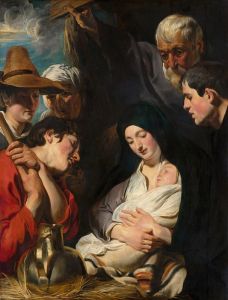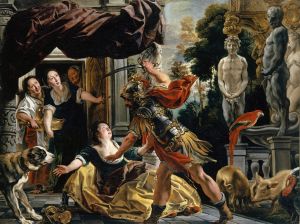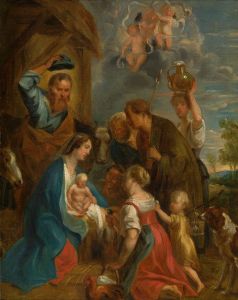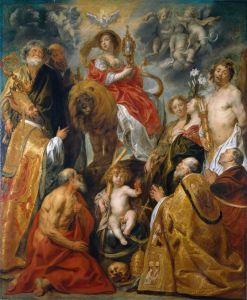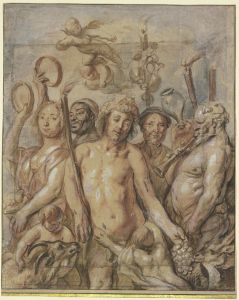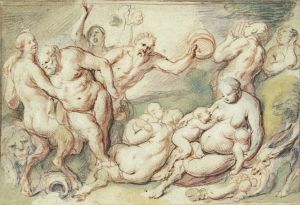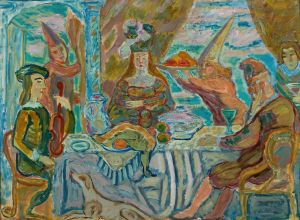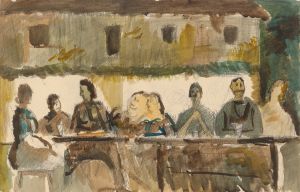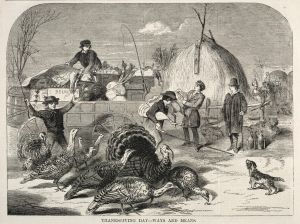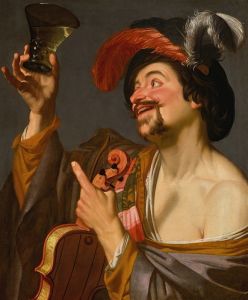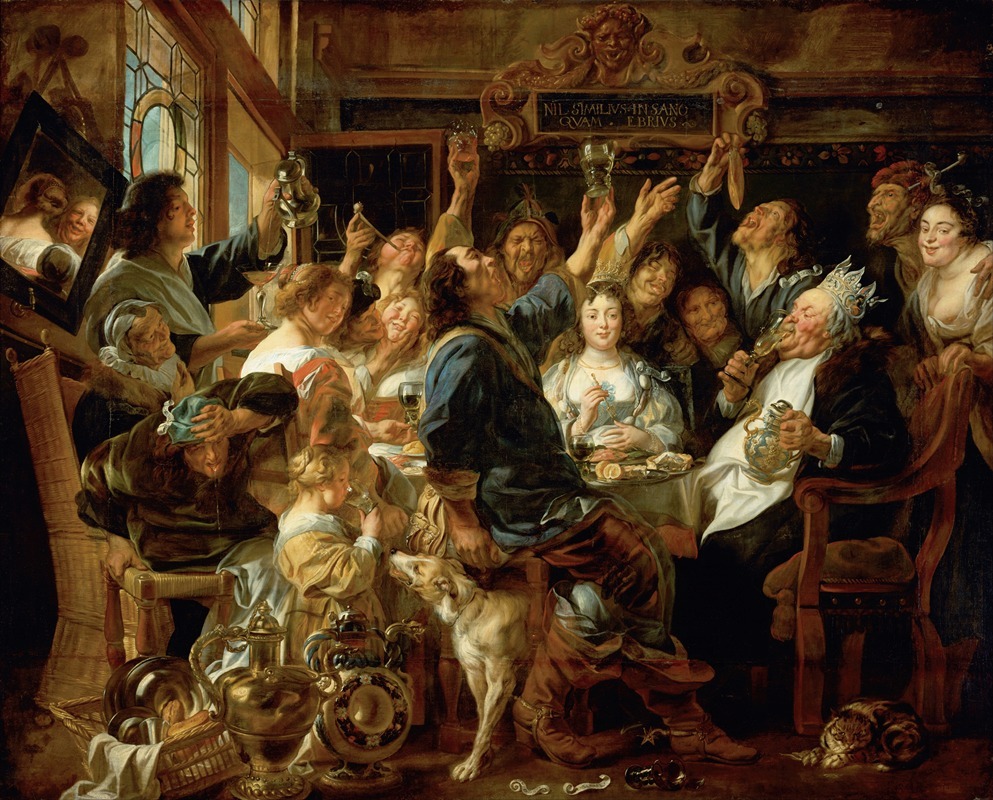
The Feast of the Bean King
A hand-painted replica of Jacob Jordaens’s masterpiece The Feast of the Bean King, meticulously crafted by professional artists to capture the true essence of the original. Each piece is created with museum-quality canvas and rare mineral pigments, carefully painted by experienced artists with delicate brushstrokes and rich, layered colors to perfectly recreate the texture of the original artwork. Unlike machine-printed reproductions, this hand-painted version brings the painting to life, infused with the artist’s emotions and skill in every stroke. Whether for personal collection or home decoration, it instantly elevates the artistic atmosphere of any space.
"The Feast of the Bean King" is a painting by the Flemish Baroque artist Jacob Jordaens. Created around 1640-1645, this work is one of several versions Jordaens painted on the theme of the "King Drinks" or "The Bean King," a popular subject in Flemish art that depicts the celebration of Epiphany, a Christian feast day.
Jacob Jordaens (1593-1678) was a prominent painter in Antwerp, known for his vibrant and dynamic compositions. He was a contemporary of Peter Paul Rubens and Anthony van Dyck, and his work is characterized by its robust figures, lively expressions, and rich use of color. Jordaens often drew inspiration from everyday life and folklore, which is evident in "The Feast of the Bean King."
The painting portrays a festive scene centered around the tradition of the Epiphany feast, where a "king" is chosen by finding a bean hidden in a cake. The person who finds the bean becomes the "king" for the day and presides over the celebrations. In Jordaens' depiction, the "king" is shown wearing a crown and holding a goblet, surrounded by a lively group of revelers. The composition is filled with animated figures, each engaged in various activities such as singing, drinking, and playing musical instruments.
Jordaens' use of light and shadow, as well as his attention to detail, brings the scene to life. The expressions on the faces of the characters convey a sense of joy and merriment, capturing the spirit of the celebration. The painting also includes elements of humor and satire, as was common in Jordaens' work, reflecting the artist's keen observation of human behavior.
The setting of the painting is a domestic interior, typical of Flemish genre scenes. The table is laden with food and drink, emphasizing the abundance and conviviality of the occasion. The inclusion of children and animals adds to the lively atmosphere, making the scene more relatable and engaging for the viewer.
"The Feast of the Bean King" is an excellent example of Jordaens' ability to combine realism with allegory. While the painting depicts a specific cultural tradition, it also conveys broader themes of human nature and social interaction. Jordaens' skillful composition and use of color create a sense of movement and energy, drawing the viewer into the celebration.
This painting is housed in the Royal Museums of Fine Arts of Belgium in Brussels, where it continues to be admired for its artistic merit and historical significance. Jordaens' work remains an important part of the Baroque tradition, and "The Feast of the Bean King" is a testament to his talent and creativity.





